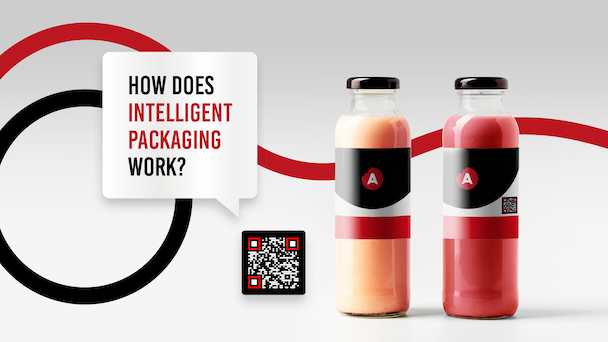The logistics of how intelligent packaging works
Intelligent packaging is one aspect of smart packaging. Essentially, it’s about bridging the gap between the physical experience and the digital world.

Appetite Creative on building intelligent packaging into product design to maximize marketing reach and build brand loyalty
It is how the internet of things (IoT) applies to the packaging of goods. It extends and enables connectivity between consumers and brands through the products they buy.
What intelligent packaging brings to packaging is enhanced communication. To do this, it uses a range of technologies.
Intelligent packaging technologies
There’s a growing list of technologies and methods for creating intelligent packaging.
What they all do is create new means of communicating real-time information about a product to retailers and customers through packaging.
These intelligent packaging functions include diagnostic and indicator technology, such as biochemical active films, temperature and oxygen control, active labels and antimicrobial packaging.
Sensors and tags also play an important part in intelligent packaging, alongside augmented reality (AR) and virtual reality (VR).
The barcode is a long-established and familiar packaging feature and it’s a key means for applying intelligent packaging technology. QR codes are two-dimensional barcodes, with dots and spaces arranged in a matrix. This matrix can connect readers to extended sources of information.
Radio frequency identification technology (RFID) tags can carry and collect real-time data, transmitting it to the user’s system. They are a more expensive option than QR codes, but they offer crucial benefits to the food supply chain, such as inventory management and food safety checks.
Another specific type of RFID system is near-field communication (NFC). These types of tags contain unique identifiers for each packaged item. They can include personalized and location-specific information.
Time temperature indicators (TTIs) detect changes in food products, based on polymerization reactions that result in color changes. This provides accessible, visual information to consumers to assure the safety and quality of food.
Freshness indicators for food products can sense the freshness of the environment either inside or outside the packaging. This intelligent packaging uses different types of sensors, including quality-indicating metabolites such as glucose, organic acids and ethanol. Sensors react to different conditions and display these through color changes to the labeling.
There is increasing use of AR technology in intelligent packaging. AR can make packaging highly interactive. Customers can launch animations and applications through the packaging directly. This enables customer engagement while providing valuable analytics.
Why use intelligent packaging?
With rapid shifts in lifestyle and consumer demand, brands need to find ways of staying in touch with consumers and building relationships with them to instill loyalty.
At the same time, supply chains increasingly favor just-in-time models of storage and distribution. A key means of supporting these models is through the use of intelligent packaging.
Intelligent packaging has multiple functions. It helps ensure product safety and quality control. It offers valuable information to consumers, retailers and distributors. It has huge potential as a dynamic marketing tool, adding value to brands by building customer engagement.
Entertain, educate and inform
Creating two-way communications with customers is a powerful way of engaging with them and delivering an extended marketing package centered on the product itself.
Using a smart packaging platform, brands can connect to their customers to entertain, educate and inform them.
In effect, smart packaging transforms the product packaging into a versatile media channel. As a facet of smart packaging, intelligent packaging transforms items into active and interactive tools.
Forecasters expect the smart packaging market to reach a global value of over $48m by 2026.
Changes in people’s lifestyles and spending habits are driving this growth, and it’s supported by developments in nanotechnology and advanced, integrated innovations.
Connecting with intelligent packaging
By building intelligent packaging into your product design, you can maximize your marketing reach and build brand loyalty.
For more information about connected experiences, please contact us.
Jenny Stanley, managing director at Appetite Creative.
Content by The Drum Network member:

Appetite Creative
The Connected Experiences Studio - We connect your Brand with Today's Audiences!
Find out more